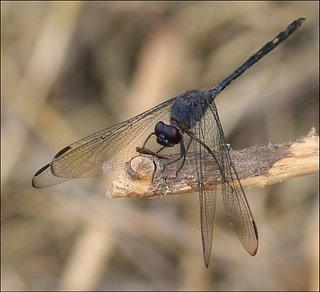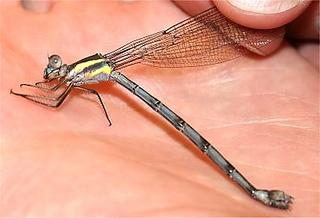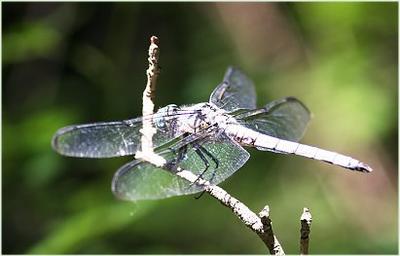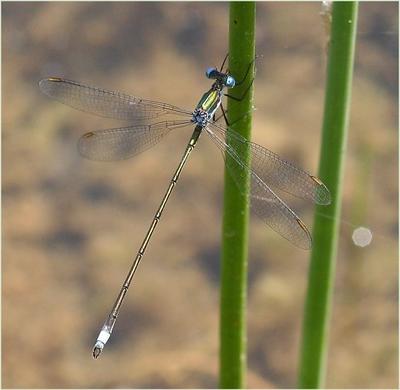Yesterday, I spent some time at the University of Michigan Museum of Zoology in the odonata range with the accomodating and helpful Mark O'Brien, researching some of the species that have been recorded in Wayne Co. that I personally have not seen. The big news, I guess, is that
Elegant Spreadwing,
Lestes inaequalis, is now striken from the list. It's inclusion was based on a lone record, a female specimen taken several years ago. I took a look at it, and lo and behold, it was mislabeled (note, MFO: I could have said "misidentified"). Males are easy to ID, their inferior (lower) claspers are longer than the superior (top) ones. You can kind of see this in the photos
here and
here, but it's really obvious in the hand, even without magnification. Females ("Lestes without testes" Mark calls them), however, usually require a microscope and some experience. I've looked all over hell's half-acre in the county for this species, but so far no luck.
We also went over some literature records. Several are from prior to 1880 (
Hagen's Bluet,
Enallagma hageni;
Canada Darner,
Aeshna canadensis;
Mottled Darner,
A. clepsydra; and
Williamson's Emerald,
Somatochlora williamsoni), and others might be in error. Of the 90 species on the
checklist, there are only 13 I haven't seen, and half of them are species that either haven't been seen for over 100 years or that I suspect are in error. Eventually, Mark and I became sidetracked into reading some of the correspondence given to the museum by E. B. Williamson (the MOS newsletter's namesake) from colleague Clarence Kennedy. I always find it interesting to get to know historical figures from a personal perspective rather than just seeing their published papers and the results of their field work. Let's just say that these two men were particularly intriguing; Mark promises to liven up our winter months summarizing some of these riveting letters in his blog.
Today I was hoping to find either
Elegant Spreadwing or
Common/Southern Spreadwing (
Lestes disjunctus disjunctus and
L. d. australis). There actually aren't that many
L. d. disjunctus specimens from southern Michigan; I don't find them all that common. There are just a smattering of
L. d. australis specimens from the state.
Now that I have a bike rack, I'm able to explore further afield at the metroparks. There is a 3-mile stretch between Lower Huron and Willow metroparks that,
from an aerial view, looked to have a nice old wooded oxbow near the bike path, so that's where I headed. This was nearly all dried up, just squishy much and lots of wetland vegetation. It was loaded with
Lestes, mostly
Sweetflag Spreadwing,
L. forcipatus. Wherever I find these, I find A LOT of them. The males look pretty much like Common Spreadwings. The easiest thing to do is catch a pair and take a look at the female. If her ovipositor is longer than her superior anal appendages,
like this, then it's a pair of Sweetflags. I netted every nth pair that I couldn't get a good look at through binoculars, but could not come up with Common/Southern. There were a smattering of
Slender Spreadwings,
L. rectangularis, some
Ruby Meadowhawks,
Sympetrum rubicundulum, and the many of the ubiquitous
Blue-fronted Dancers,
Argia apicalis. Despite the lack of diversity, this looks like a great spot earlier in the season, and later on for patrolling
Aeshnas. I'm headed to a different spot furthern downriver tomorrow.


















































